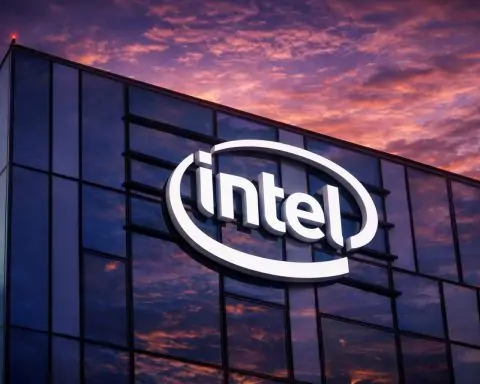- SpaceX’s 33rd Cargo Dragon mission (CRS-33) launched from Cape Canaveral at 2:45 a.m. EDT on Aug. 24, 2025, carrying more than 5,000 pounds of supplies and a trunk-mounted boost module to raise the ISS orbit.
- The Dragon’s trunk contains an independent propulsion system with two Draco engines to perform orbit-raising burns starting in September 2025 and reduce reliance on Russia’s Progress freighters.
- Starting in September 2025, Dragon will perform a series of ISS orbit-raising burns to sustain altitude, providing about 1.5× the reboost capability of a Russian Progress.
- Capsule C211, the 50th SpaceX Dragon to reach the ISS, autonomously docked to the Harmony module at 7:30 a.m. EDT on Aug. 25, 2025, and will stay attached for nearly five months to execute multiple reboosts.
- SpaceX has delivered well over 300,000 pounds of cargo to the ISS and supported more than 1,000 science and research projects over the years.
- Starship Flight 10 was scrubbed 17 minutes before T-0 on Aug. 24, 2025 due to a ground-systems issue, with a retry targeted for Aug. 25 in the same 7:30 p.m. EDT window.
- Rocket Lab’s 70th Electron launch, Live, Laugh, Launch, occurred on Aug. 23, 2025 from New Zealand, deploying five satellites to a 413-mile orbit and marking the 12th Electron launch of 2025.
- Blue Origin scrubbed NS-35 on Aug. 23, 2025 due to an avionics issue, and the mission would fly later with the RSS H.G. Wells capsule and more than 40 science and educational payloads.
- ISRO unveiled a 2025–2040 roadmap to deploy 103 new satellites, raise the launch cadence to 12–15 per year, and build a 140-satellite LEO broadband constellation to support Moon missions and human spaceflight by 2040.
- Japan’s JAXA and ESA announced Ramses to observe near-Earth asteroid Apophis during its 2029 close approach, with JAXA providing the H3 launcher and exploring a 2028 DESTINY+ ride-share option for Apophis.
ISS Resupply Mission Boosts Orbit and Science
SpaceX Reboosts the ISS: In the early hours of Aug. 24, SpaceX’s 33rd Cargo Dragon mission (CRS-33) blasted off from Cape Canaveral carrying over 5,000 pounds of supplies – and a special new “boost” module to raise the International Space Station’s orbit [1] [2]. The uncrewed Dragon lifted off at 2:45 a.m. EDT Sunday atop a Falcon 9, beginning a day-long journey to the ISS [3]. “Commercial resupply missions to the International Space Station deliver science that helps prove technologies for Artemis lunar missions and beyond,” said acting NASA Administrator Sean Duffy, noting this flight will test “3D printing metal parts and bioprinting tissue in microgravity” to aid future Moon and Mars crews [4]. The Dragon is packed with dozens of experiments (from bone-loss studies to 3D-printed medical implants) and general cargo for the station’s Expedition 73 crew [5] [6].
First ISS Reboost by a US Vehicle: This mission carries a propulsion kit mounted in Dragon’s trunk designed to periodically boost the ISS’s orbit, reducing reliance on Russia’s Progress freighters [7] [8]. “The hardware located inside the trunk of Dragon contains an independent propellant system… to fuel two Draco engines,” explained Bill Spetch, operations integration manager for NASA’s ISS Program [9]. Starting in September, the Dragon will perform a series of orbit-raising burns to “help sustain the orbiting lab’s altitude” throughout fall 2025 [10]. Spetch noted this Dragon boost kit provides about 1.5× the reboost capability of a Russian Progress, and the plan is for Dragon to handle “the vast majority” of station reboosts while it’s docked [11]. The burns are carefully timed with international partners to align with visiting spacecraft traffic [12]. SpaceX’s Sarah Walker, Director of Dragon Mission Management, said these CRS missions have now delivered “well over 300,000 pounds of cargo… and over 1,000 science and research projects” to the ISS over the years [13]. She added that helping with station-keeping “feels like we get to become an even more integrated part of the ISS operations ecosystem” [14].
50th Dragon Reaches ISS: After a flawless launch, the Cargo Dragon (capsule C211, on its third flight) autonomously docked to the Harmony module at 7:30 a.m. EDT on Aug. 25, marking the 50th SpaceX Dragon vehicle to reach the ISS [15]. Uniquely, this Dragon will remain attached for nearly five months – the first extended-duration cargo stay – specifically to execute multiple reboosts through the end of the year [16]. Each boost saves wear on the station’s own thrusters and on future Progress supply ships as the partners work toward eventually deorbiting the ISS around 2030 [17]. (Notably, NASA has also contracted SpaceX to develop a separate “US Deorbit Vehicle” by 2028–29 to safely retire the ISS when the time comes [18].) “Over [the last] 25 years, we’ve hosted more than 280 residents [on ISS] and enabled over 4,000 scientific experiments from researchers in 110+ countries,” highlighted Dr. Heidi Parris, NASA’s ISS Program Scientist, underscoring the lab’s legacy as it nears a quarter-century in orbit [19]. In crew news, NASA astronaut Mike Fincke marked his 400th cumulative day in space on Aug. 20, becoming only the 9th American (38th human overall) to surpass that milestone [20] [21]. Mission Control feted Fincke’s achievement as the ISS crew continued research ranging from physiology studies to Earth observation this week.
Starship Test Flight Scrubbed at Last Minute
Super Heavy Scrub: SpaceX’s much-anticipated Starship Flight 10 test launch was poised to be a headline event on Aug. 24 – until a last-minute glitch intervened. The fully stacked Starship (the world’s largest rocket at 400+ feet tall) was fueled and counting down at SpaceX’s Starbase in Texas for a 7:30 p.m. EDT launch window Sunday. But just 17 minutes before T–0, SpaceX called off the attempt due to an issue with ground systems [22]. “Standing down from today’s tenth flight of Starship to allow time to troubleshoot an issue with ground systems,” the company announced in a post on X (Twitter) at 7:13 p.m. EDT [23]. The scrubbed launch – on what would have been Starship’s first orbital-class test flight in four months – meant we’ll “have to wait a little longer” to see the 10th mission of SpaceX’s Mars-capable mega-rocket [24].
Retry on Deck: SpaceX quickly reset for another try. The company said it was targeting Monday, Aug. 25, for the next launch attempt in the same 7:30 p.m. EDT window [25], pending resolution of the ground system problem. (At press time, the Monday attempt was still on standby, with engineers working the issue.) Starship’s 10th test is considered crucial – SpaceX is aiming to finally reach space with the two-stage vehicle after several high-altitude mishaps and an April test that ended in a mid-air explosion. For Flight 10, the plan is for the Super Heavy booster to propel Starship nearly to orbit, then ditch in the ocean near the Indian Ocean, while the Starship upper stage will attempt a high-velocity reentry and long-range splashdown [26] [27]. Each test provides invaluable data as SpaceX iterates on the Starship design, which is central to Elon Musk’s vision of fully reusable rockets for Moon and Mars missions. (NASA has also tapped Starship as the human lunar lander for the Artemis III Moon landing in the coming years.) This weekend’s scrub came despite SpaceX securing an FAA launch license after addressing environmental and safety concerns from previous explosions [28]. The company remains optimistic: Musk’s team implemented numerous upgrades after the last failures and had received regulatory clearance, saying they were “gearing up for the next test” with improvements in place [29]. Crowds of fans and spaceflight observers – both on-site in South Texas and online – will be watching closely when Starship takes its next shot at making history later this week.
Commercial Launch Roundup: Rocket Lab and Blue Origin
- Rocket Lab’s 70th Launch – Cloaked in Secrecy: On Aug. 23 (just ahead of the weekend), small-launch specialist Rocket Lab achieved a major milestone with the 70th flight of its Electron booster. The mission, cheekily nicknamed “Live, Laugh, Launch,” lifted off from Rocket Lab’s New Zealand pad at 6:42 p.m. EDT carrying five satellites for a confidential commercial customer [30]. Little is known about the payloads – this was the second of two covert launches for the same client – and Rocket Lab even terminated its live webcast about 10 minutes after liftoff at the customer’s request [31]. That’s pretty much all we know about the flight, Rocket Lab said of the unusually secretive mission [32]. “Live, Laugh, Launch” successfully delivered the five satellites to a 413-mile orbit, and marked the 12th Electron launch of 2025 (underscoring an impressive cadence for the 18-meter rocket) [33]. The company touted Electron as “the world’s most frequently launched small-lift rocket” this year [34], and is already preparing to debut its larger Neutron vehicle from Virginia later in 2025 [35] [36]. Rocket Lab’s rapid launch tempo and planned upgrade to Neutron illustrate the growing demand for dedicated smallsat launch services in the booming satellite market.
- Blue Origin Scrubs Suborbital Science Flight: Not all missions went as planned this weekend. Jeff Bezos’ Blue Origin had aimed to fly its 35th New Shepard suborbital rocket mission on Aug. 23 from West Texas – carrying over 40 scientific and educational payloads – but the launch was called off at the last minute due to a technical glitch. “We are scrubbing today’s NS-35 launch. The team encountered an issue related to the booster’s avionics,” Blue Origin announced in an update on Saturday morning [37]. The uncrewed flight, when it occurs, will loft experiments ranging from NASA-sponsored student projects (TechRise Challenge) to university technology demos, and would bring the total number of payloads flown on New Shepard to over 200 [38]. Blue Origin said a new target launch date will be set after the avionics issue is resolved [39]. This mission will use the reusable RSS H.G. Wells capsule and the newest New Shepard booster – the same vehicle that last flew on the NS-29 mission, which successfully demonstrated lunar gravity simulation in 2022 [40]. The NS-35 launch is particularly anticipated as it will be Blue Origin’s first New Shepard flight since a September 2022 anomaly that grounded the system for a year. (That previous incident involved a booster failure with no crew on board, leading to upgrades before flights resumed.) With New Shepard, Blue Origin’s suborbital program has now flown research and tourism missions alike; the forthcoming NS-35 will focus solely on research payloads, providing 3+ minutes of microgravity for experiments in fields like biology, material science, and microfluidics [41]. Dozens of student postcards will also fly as part of Blue Origin’s Club for the Future outreach program [42]. Blue Origin’s team emphasized safety in standing down and will only proceed when the booster is fully ready for a reliable flight. As the company stated, safety of the payloads and crew (when aboard) remains the top priority.
Ambitious Plans & Partnerships: India’s Moonshot and a Japan-Europe Alliance
India Unveils 15-Year Space Roadmap: On Aug. 24, India’s space agency ISRO announced an ambitious long-term vision for the country’s space program, outlining goals through the year 2040. In an exclusive briefing on India’s National Space Day, ISRO’s Space Applications Center Director Nilesh Desai “unveiled [ISRO’s] ambitious roadmap for 2025 to 2040,” which includes deploying 103 new satellites and pursuing human spaceflight and interplanetary exploration [43] [44]. The plan calls for ramping up India’s launch cadence to 12–15 satellites per year across Earth observation, communication, and navigation satellites, as well as multiple deep-space probes [45]. Notably, ISRO will work on a 140-satellite LEO broadband constellation via public-private partnership to provide satellite internet services [46] [47] – putting India into the race alongside Starlink, OneWeb, and others. The roadmap also envisions several new lunar missions (Chandrayaan-4 through Chandrayaan-8) and sets a bold aspiration: landing an Indian astronaut on the Moon by 2040 [48] [49]. This would be achieved after India’s upcoming human orbital flight program (Gaganyaan), and via an indigenous lunar lander mission in the 2030s. “We have charted out a vision… to 2040,” Desai said, emphasizing that the plan balances “a mix of Earth observation and space exploration” targets [50] [51]. ISRO Chairman Dr. S. Somanath and Dr. V. Narayanan (head of ISRO’s rocket division) stressed that India aims to be a leading spacefaring nation: “By 2040 India will be on par with the best of the best space-faring nations,” Narayanan asserted [52]. Prime Minister Narendra Modi also lauded ISRO’s vision, urging scientists to push beyond current frontiers. “India has already reached the Moon and Mars, and now must explore deeper regions of space… Beyond galaxies lies our horizon!” Modi proclaimed, signaling political support for India’s cosmic ambitions [53]. The expansive plan also involves developing a new heavy-lift rocket (provisionally called the Lunar Module Launch Vehicle) for interplanetary missions and, potentially, human lunar landings [54] [55]. If executed, India’s 15-year roadmap could dramatically elevate its status in space exploration – from an Earth orbit powerhouse to the elite club of nations mounting human missions to the Moon.
Japan & Europe Team Up for Asteroid Mission: International collaboration news also broke heading into this week. Japan’s JAXA and the European Space Agency (ESA) announced a partnership on a mission to observe the near-Earth asteroid Apophis during its 2029 close approach. JAXA Vice President Masaki Fujimoto revealed that Japan will provide its new H3 rocket as the launch vehicle for ESA’s proposed “Ramses” mission to Apophis [56]. This commitment comes as NASA’s own Apophis mission (OSIRIS-APEX) faces budget uncertainty, leaving the international community eager to ensure Apophis is studied when it passes within ~31,000 km of Earth in 2029 [57]. “Under the circumstances, JAXA must increasingly support Ramses to study Apophis on behalf of humanity worldwide,” Fujimoto told a Japanese science ministry panel [58]. The Ramses mission (currently in project phase) is expected to carry scientific instruments to observe Apophis’ surface and environment during the flyby. Final approval for ESA funding will be decided at a ministerial meeting in November, but JAXA’s early pledge significantly boosts the mission’s prospects [59]. In addition to the H3 launch, Japan is considering a ride-share opportunity to send its own space probe (the DESTINY+ spacecraft) along with Ramses in 2028 [60]. JAXA would also contribute mission hardware, offering an infrared sensor and solar panels for the asteroid probe [61]. Studying Apophis up-close is seen as crucial for planetary defense science, and this cooperation highlights the growing ties between Europe and Japan in space. Both ESA and JAXA affirmed in May that they remain committed to NASA’s Artemis program and broader alliances, even as global partnerships shift (with China and Russia teaming up on their own lunar projects) [62]. The European Union and Japan also recently agreed to coordinate on satellite communications constellations – for example, Japan will help launch satellites for Europe’s planned IRIS² broadband constellation under a multi-launch contract signed with Mitsubishi Heavy Industries [63]. And looking ahead, Japan and India plan to cooperate on a joint lunar rover mission (LUPEX) later this decade [64]. These moves underscore how international collaboration is flourishing: “Europe and Japan are deepening space collaboration amid shifting U.S. space policies,” Reuters noted, as like-minded allies pool resources for ambitious missions in the face of intensifying competition [65].
Policy Shifts: US Cuts Red Tape, Africa Opens Door for Starlink
US Eases Commercial Space Regulations: In a boost for the space industry, the United States government has taken steps to streamline launch licensing and reduce regulatory hurdles. Earlier in August, President Donald Trump signed an Executive Order titled “Enabling Competition in the Commercial Space Industry”, directing agencies to simplify and expedite processes for commercial rocket launches and satellite operations [66] [67]. Trump’s order calls on the Transportation Department (which oversees the FAA) to eliminate “outdated, redundant or overly restrictive” rules for launch and reentry vehicles and to speed up environmental reviews for new launch sites [68] [69]. “Inefficient permitting processes discourage investment and innovation, limiting the ability of U.S. companies to lead in global space markets,” the Executive Order states pointedly [70]. The policy is widely seen as a boon for SpaceX and other launch providers who have often chafed at lengthy FAA approval timelines. In fact, SpaceX’s Starship development program – with its rapid test schedule – was cited as a key motivator, after SpaceX publicly sparred with the FAA over launch delays [71] [72]. While SpaceX is expected to be “the single biggest immediate beneficiary” of the deregulation push [73], companies like Blue Origin and other commercial space ventures should also benefit from a more relaxed, business-friendly regulatory environment [74]. The order further mandates creation of a streamlined framework for authorizing novel space activities that don’t fit neatly into current licensing regimes [75]. Industry leaders welcomed the news, saying it will help U.S. firms maintain their competitive edge globally. The executive order follows a broader pro-space stance by the current U.S. administration, which has pledged support for missions to the Moon and Mars. Analysts note that balancing safety and environmental protection with innovation remains crucial – the FAA will still enforce public safety, but the goal is to cut unnecessary “red tape” that has slowed projects in the past [76]. As one example, the FAA had grounded Starship flights for months earlier this year after explosive test flights, prompting SpaceX to implement fixes and the government to consider more flexible oversight [77]. With commercial launch activity at an all-time high in 2025, the regulatory reforms are widely seen as timely. SpaceX alone has conducted 100+ Falcon 9 launches this year (a record pace) [78] [79], and new players like ULA’s Vulcan, Blue Origin’s New Glenn, and Rocket Lab’s Neutron are on the horizon – so a more efficient licensing process could accelerate the next phase of launch market growth.
Starlink Nears Green Light in South Africa: On the international front, South Africa is moving to loosen regulations that have thus far kept SpaceX’s Starlink satellite internet service out of its market. Since 2021, Starlink has been unable to operate in South Africa due to strict ownership rules – the country’s law requires foreign telecom providers to ensure 30% of their local equity is owned by Black South African investors as part of Black Economic Empowerment (BEE) policies [80] [81]. Elon Musk (a South Africa native) had publicly blasted this requirement as “openly racist” for effectively blocking Starlink. Now, the South African government has proposed a workaround via “Equity Equivalent Investment Programmes” (EEIPs) that would allow companies to invest in local projects in lieu of giving up equity [82] [83]. Communications Minister Solly Malatsi in late August put forward a draft policy to recognize these equity-equivalent investments – such as funding rural broadband infrastructure, schools, or small businesses – to satisfy the BEE objectives without mandating share sales [84] [85]. The ministry stated this approach is intended to “attract investment and boost broadband coverage” by accommodating multinationals who cannot meet the equity rule [86] [87]. SpaceX had formally petitioned South African regulators last year, arguing the 30% local ownership rule was a “significant barrier” and endorsing the equity-equivalent concept [88] [89]. The government’s shift comes shortly after South African President Cyril Ramaphosa discussed tech investments (reportedly including Starlink) during a visit to the U.S. in May [90]. However, the proposal has ignited political controversy in South Africa. Opposition parties accuse the government of bending the rules for Elon Musk’s benefit. The leftist Economic Freedom Fighters (EFF) party railed that they would oppose “any compromising of our laws to allow for Starlink to operate in South Africa”, insisting the 30% local stake requirement remain non-negotiable [91]. In response, Minister Malatsi has emphasized that the policy change is “not a special dispensation for Starlink” but a broader effort to modernize telecom law while upholding the aims of empowerment legislation [92] [93]. “Transformation is sacrosanct… it’s non-negotiable,” Malatsi told Parliament, reaffirming that the government still prioritizes Black ownership wherever feasible [94] [95]. He argues that allowing equity alternatives will accelerate connectivity in under-served areas by bringing in providers like Starlink who were previously deterred [96] [97]. The draft policy has been published for public comment and could be finalized in the coming months. If adopted, Starlink could begin offering service in South Africa as soon as it obtains an amended license – making it one of the last major markets to get Starlink coverage. The outcome is being closely watched, as it may set a precedent for how other countries reconcile foreign investment with domestic empowerment goals in the high-tech sector.
Bottom Line: A Dynamic 48 Hours in Space
The period of Aug. 24–25, 2025 showcased the incredible breadth of today’s space activities – from routine orbital deliveries to grand future plans. In low Earth orbit, astronauts received fresh supplies and new tech demos thanks to SpaceX’s Dragon, which for the first time will even help propel the ISS itself [98] [99]. Meanwhile, SpaceX’s Starship, a vehicle aiming to revolutionize deep space travel, experienced the agony of a last-second abort – a reminder that spaceflight’s cutting-edge still comes with risks and learning curves [100] [101]. On the commercial front, private companies notched successes and faced setbacks: Rocket Lab quietly notched its 70th launch for a mystery client [102], while Blue Origin had to stand down its suborbital rocket but vows to try again soon [103]. Around the globe, space agencies are forging new alliances and upping the stakes – India is charting an ambitious path to the Moon and beyond [104] [105], and Japan is joining Europe to ensure humanity doesn’t miss a cosmic encounter with an asteroid [106] [107]. All this comes as regulators adapt to a rapidly changing space landscape: the U.S. is cutting red tape to let innovation soar [108] [109], and even nations with strict laws are seeking creative solutions to welcome game-changing services like Starlink [110] [111]. In just two days, we’ve seen launch pads igniting, countdowns halted, partnerships cemented, and policies rewritten – a vivid snapshot of a new space era in full swing. Each development – successful or not – underscores that the global push into space is accelerating. As one era (the ISS’s quarter-century in orbit) is maintained and another (Starship-era exploration) is on the horizon, the events of August 24–25 show the world’s space community pressing onward and upward, turning setbacks into lessons and bold ideas into concrete actions. The sky is no longer the limit – and after this whirlwind weekend, the stage is set for even bigger breakthroughs in the days to come.
Sources: Spaceflight Now [112] [113]; NASA [114] [115]; Space.com [116] [117]; Blue Origin [118]; Reuters [119] [120]; NDTV [121] [122]; TS² Space News [123] [124]; Reuters (South Africa) [125] [126].
References
1. ts2.tech, 2. ts2.tech, 3. www.nasa.gov, 4. www.nasa.gov, 5. www.nasa.gov, 6. spaceflightnow.com, 7. ts2.tech, 8. spaceflightnow.com, 9. spaceflightnow.com, 10. spaceflightnow.com, 11. spaceflightnow.com, 12. spaceflightnow.com, 13. spaceflightnow.com, 14. spaceflightnow.com, 15. spaceflightnow.com, 16. spaceflightnow.com, 17. spaceflightnow.com, 18. spaceflightnow.com, 19. spaceflightnow.com, 20. www.space.com, 21. www.space.com, 22. www.space.com, 23. www.space.com, 24. www.space.com, 25. www.space.com, 26. ts2.tech, 27. ts2.tech, 28. www.reuters.com, 29. ts2.tech, 30. www.space.com, 31. www.space.com, 32. www.space.com, 33. www.space.com, 34. ts2.tech, 35. ts2.tech, 36. www.space.com, 37. www.blueorigin.com, 38. ts2.tech, 39. www.blueorigin.com, 40. www.blueorigin.com, 41. www.blueorigin.com, 42. www.blueorigin.com, 43. www.ndtv.com, 44. www.ndtv.com, 45. www.ndtv.com, 46. www.ndtv.com, 47. www.ndtv.com, 48. www.ndtv.com, 49. www.ndtv.com, 50. www.ndtv.com, 51. www.ndtv.com, 52. www.ndtv.com, 53. www.ndtv.com, 54. www.ndtv.com, 55. www.ndtv.com, 56. www.reuters.com, 57. www.reuters.com, 58. www.reuters.com, 59. www.reuters.com, 60. www.reuters.com, 61. www.reuters.com, 62. www.reuters.com, 63. www.reuters.com, 64. www.reuters.com, 65. www.reuters.com, 66. www.reuters.com, 67. www.reuters.com, 68. www.reuters.com, 69. www.reuters.com, 70. www.reuters.com, 71. www.reuters.com, 72. www.reuters.com, 73. www.reuters.com, 74. www.reuters.com, 75. www.whitehouse.gov, 76. www.reuters.com, 77. www.reuters.com, 78. spaceflightnow.com, 79. spaceflightnow.com, 80. www.reuters.com, 81. www.reuters.com, 82. www.reuters.com, 83. www.reuters.com, 84. www.reuters.com, 85. www.reuters.com, 86. www.reuters.com, 87. www.reuters.com, 88. www.reuters.com, 89. www.reuters.com, 90. www.reuters.com, 91. www.reuters.com, 92. www.reuters.com, 93. www.reuters.com, 94. www.reuters.com, 95. www.reuters.com, 96. www.reuters.com, 97. www.reuters.com, 98. ts2.tech, 99. spaceflightnow.com, 100. www.space.com, 101. www.space.com, 102. www.space.com, 103. www.blueorigin.com, 104. www.ndtv.com, 105. www.ndtv.com, 106. www.reuters.com, 107. www.reuters.com, 108. www.reuters.com, 109. www.reuters.com, 110. www.reuters.com, 111. www.reuters.com, 112. spaceflightnow.com, 113. spaceflightnow.com, 114. www.nasa.gov, 115. www.nasa.gov, 116. www.space.com, 117. www.space.com, 118. www.blueorigin.com, 119. www.reuters.com, 120. www.reuters.com, 121. www.ndtv.com, 122. www.ndtv.com, 123. ts2.tech, 124. ts2.tech, 125. www.reuters.com, 126. www.reuters.com










